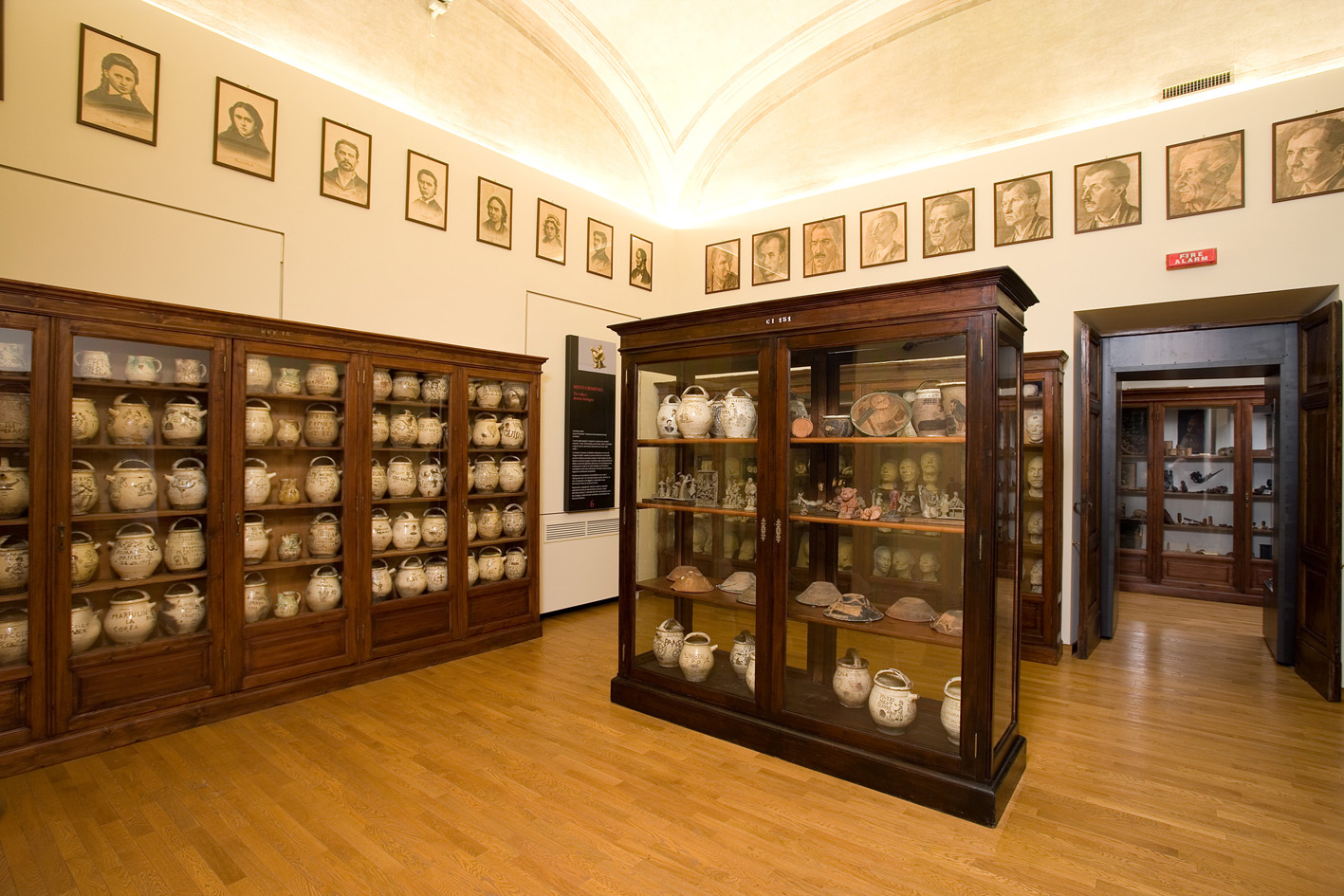
The Cesare Lombroso Museum of Criminal Anthropology was founded in the last quarter of the 19th century at the behest of the physician and anthropologist who still bears his name, best known for his theories on the link between physiognomy and criminal degeneration. Although these theories have been largely disproved scientifically, even today visiting the Museum of Crime in Turin is certainly a singular experience. After all, Turin is known for its mysterious and esoteric character. What to know about the museum?
What the Lombroso Museum holds
The Cesare Lombroso Museum of Criminal Anthropology is now located at the Palace of the Anatomical Institutes, along with other museums that represent the museum hub of positivism in Turin and testify to the fervor of this historical and philosophical period in the city.
The current layout dates back to 2009, one hundred years after the death of its founder, and includes more than seven thousand pieces. Visitors can see in the various rooms:
- studies and drawings
- anatomical preparations
- bodies of crime
- photographs from the period
- artifacts from prisons and asylumsThe skeleton of Cesare Lombroso is also preserved within the museum, per his testamentary will.
Hours of the Lombroso Museum of Criminal Anthropology.
Attualmente il museo è aperto dal lunedì al sabato dalle 10 alle 18, mentre la domenica è il giorno di chiusura. L’ultimo ingresso è consentito alle 17:30, mezzora prima della chiusura. Ti invito sempre a visitare il sito ufficiale dei musei per verificare che non ci siano cambiamenti di orario, per esempio in occasione delle festività.
How to get to the Lombroso Museum in Turin
Il museo si trova oggi presso il Palazzo degli Istituti anatomici a Torino, in via Giuria. Per raggiungerlo in autobus si possono prendere le linee 9,16, 18, 67. Per chi vuole raggiungerlo in metropolitana, la fermata più vicina è invece Nizza.
What to know about the history of the Lombroso Museum
Cesare Lombroso, a native of Verona, after undertaking studies in medicine, enlisted as a volunteer doctor in the Italian Wars of Independence in 1859. It was from this year that the nucleus of his collection began to be created.
Beginning in 1876, the objects of scientific, medical and anthropological interest that he collected and on which he based his work were exhibited in Via della Zecca in Turin, only to be moved the following year to the laboratory in Via Po.
Of great importance for the development and dissemination of his theories was the Italian General Exhibition of 1884, which took place precisely in Turin, inside the Valentino Park and during which Lombroso displayed part of his collection in two showcases.
After other removals of his collections, mainly due to the constant increase in the number of pieces, at the time of Lombroso’s death the direction of the museum was taken over by his friend and assistant Mario Carrara, who had also married his daughter Paola.
Lombroso’s rediscovery, despite the fact that by then his theories had been proven wrong, was mainly due to the 1985 exhibition “Science and Guilt.” Since 2001, Lombroso’s collections have entered the so-called “Man Project” of the University of Turin, with the aim of creating a museum center that could bear witness to the studies that have animated the city in the fields of science revolving around human beings, such as anatomy, anthropology and ethnography.
More museums to visit in Turin
If you are in Turin and want to visit the Cesare Lombroso Museum of Criminal Anthropology, the other museums in the cluster are also worth lingering over. Opening hours are the same: Monday through Saturday from 10 a.m. to 6 p.m. You can purchase a ticket that includes admission to the Museum of Criminal Anthropology and the following museums:
- Museum of Human Anatomy
- Museum of Anthropology and Ethnography
- Fruit Museum
The former was founded in 1739 and has been at this location since 1898. It is named after Luigi Rolando, an anatomist and physician. The special feature of this museum is the layout, which still reproduces the nineteenth-century atmosphere-for example, the exhibits do not have the classic caption we are used to.
But never fear: the “vintage” exhibit is supported by a guidebook and video station. Visitors will thus be able to immerse themselves in the prestige that the Turin school of anatomy experienced between the 19th and 20th centuries, gaining a better understanding of the atmosphere there.
The Museum of Anthropology and Ethnography, established in 1926 at the behest of Giovanni Marro (a psychiatrist and lecturer in anthropology for the natural sciences), was only refurbished in 2017. Inside are ethnographic collections from all over the world and human remains from Ancient Egypt, brought to Italy by the Italian Archaeological Mission, of which Egyptologist Ernesto Schiaparelli was part.
Finally, the Fruit Museum, which houses the collection of Francesco Garnier Valletti, an artisan, artist and scientist who lived in the late 19th century. It was opened in 2007 and houses more than a thousand plastic artificial fruits, which tell visitors about the importance of biodiversity.
Not only the Egyptian Museum, then: Turin offers museums and attractions for all tastes, especially for lovers of mystery and esotericism.

